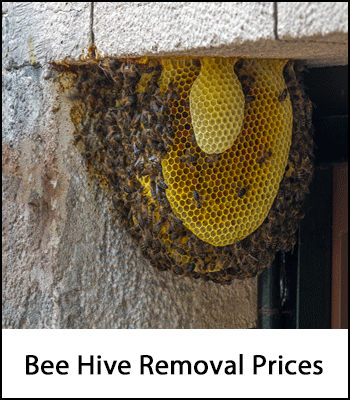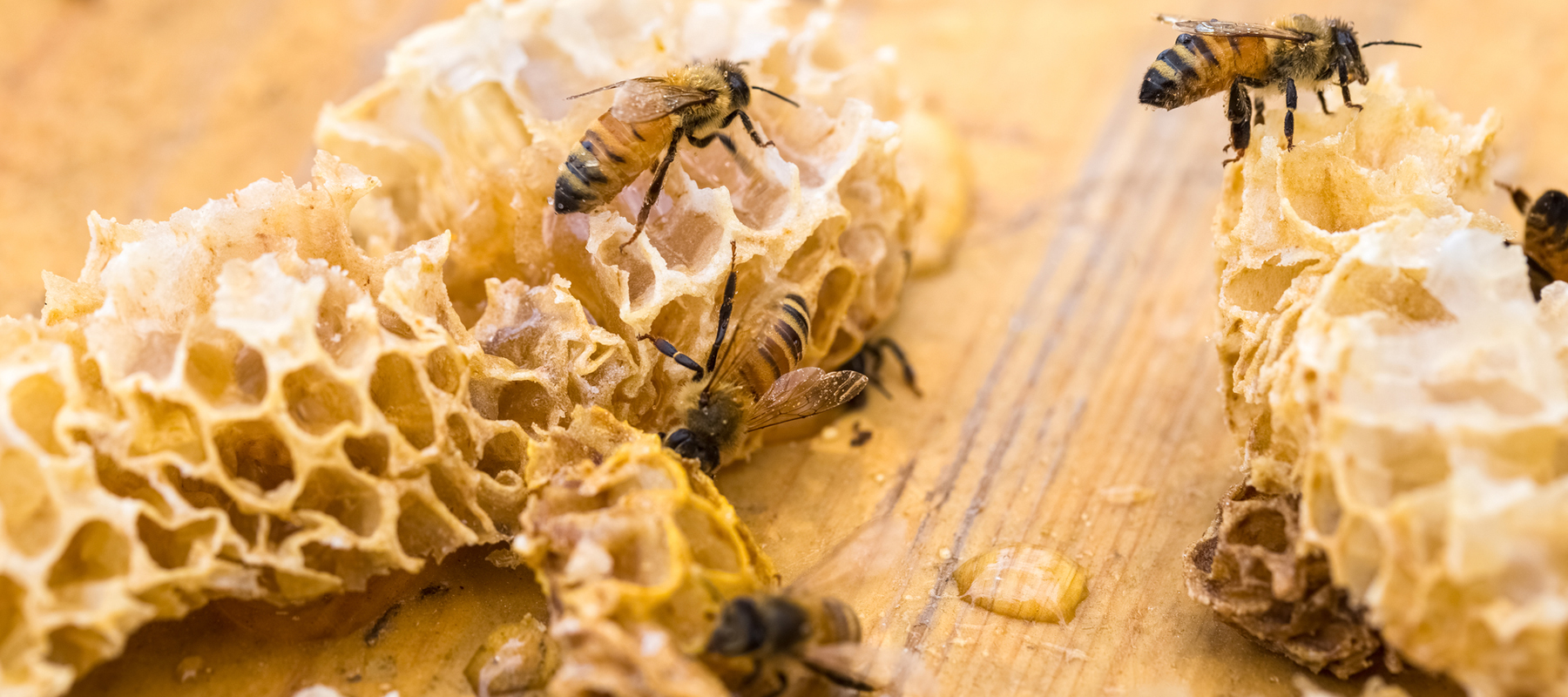Beehive Removal and Relocation Cost Guide
Last Updated: October 25, 2023

Fact Checked By: Ryan Maguire
On This Page
Summary: Beehive Removal Prices #
The average beehive removal job will cost $75 to $150 while more complex jobs can run up to $800. A structural infestation (inside of a wall) can become very expensive and range between $1,000 and $2,000 as repair and reconstruction costs will apply. Size, accessibility and location of the beehive will all factor into the total cost.

Bees are both a pest and a necessity, making the decision to eradicate them a somewhat complicated one. As pollinators, bees are responsible for the reproduction of many of the foods we eat. But bee stings are also painful and even fatal in some cases. If a bee colony on your property is causing you stress, eradication isn't the only solution. It may be possible, as well as cheaper, to seek the services of a beekeeper that will remove and relocate the colony.
Beehive Removal Costs #
For a small hive (less than 3 feet wide) removed from an easily accessible area like a tree limb or eave, expect to pay $100-$300.
For a medium hive (3-5 feet wide) or one that's in a tougher spot like inside a wall, costs often range from $300-$600.
Large hives (over 5 feet wide) or those in very challenging locations like high on the roofline can cost $600-$1,000 or more.
Professionals who specialize in live bee removal and relocation tend to charge more than pest control companies that will exterminate the bees.
Getting a hive removed from inside the walls of your home will be on the higher end of the price range.
Beehive Relocation Costs #
Here are typical costs for beehive relocation:
For a small hive (less than 3 feet wide), expect to pay $150-$400 for relocation.
For a medium hive (3-5 feet wide), pricing is often $400-$700.
Large hives (over 5 feet wide) can cost $700-$1,200 or more to relocate.
Getting a hive relocated from inside walls or very difficult locations will be at the higher end.
Live bee removal specialists tend to charge more than exterminators that will kill the bees.
Additional fees may apply for things like emergency same-day service, night/weekend calls, travel to remote locations, etc. And keep in mind there's often a separate fee to repair any damage left behind from removing the hive.
Real-Life Bee Hive Removal and Relocation Cost Examples #
Here are some real-life examples of what people have paid to have a bee hive removed or relocated, with the pricing bolded:
Melissa paid $450 to have a medium-sized hive removed from her eaves and the bees relocated.
James paid $750 to have a large hive removed from a tree in his yard and exterminated.
Cindy was quoted $1,100 to have a very large hive removed from inside her chimney. This included live relocation of the bees.
Andrew's pest control company charged $250 to exterminate a small hive found under his porch.
Jessica paid $600 to have a beekeeper relocate a large hive found inside her wall. The price included repairing the drywall damage.
Thomas was quoted $950 to relocate a huge hive from a shed on his farm. The quote was higher because of the remote location.
Linda paid $350 to have a medium hive removed from a tree and relocated to a bee farm outside the city.
So in summary, you can expect pricing ranging from $250 for small hive removal to well over $1,000 for very large, complex jobs.
Bee Removal Considerations #
Keep the following points in mind when considering a pro for bee removal:
Relocation vs. Extermination
Killing bees that are on your property isn't illegal and is the easiest way to get rid of a colony. Due to Colony Collapse Disorder (CCD), however, wiping out honey bees may not be the wisest course of action. Then again, the spread of Africanized honey bees, which are more dangerous, makes eradication seem like a safer option. In fact, some state officials recommend the eradication of wild bee colonies that are in close proximity to humans. Before choosing how to handle a bee colony find out what officials from your state's agricultural department advise. In Florida, for example, there are strict bee removal regulations.
Swarms vs. Hives
A hive is an established home where bees nest, rear broods, and store food. A swarm is a mass of bees in search of a new home. Bee swarms may appear frightening but swarming bees are actually more docile than nesting bees (with the exception of Africanized bees). Swarms are only temporary and don't typically need to be removed; within a few days the swarm should move to a new hive location. Call a local beekeeper if you want a swarm cluster removed.
Bee Proofing and Preventing Future Infestations #
Bees can fit through openings as small as 1/8". Common locations where bees build hives include trees, bird houses, sheds, rain gutters, A/C units, beneath the lining of a roof, and behind brickwork. Bee proofing areas by sealing up potential entry points can prevent the establishment of a colony. A professional can thoroughly bee proof your home and property. Do-it-yourself techniques such as these may also be employed.
Once a beehive has been removed steps should also be taken to ensure that bees don't move back into the space, other pests aren't attracted to remaining hive materials, and organic matter doesn't damage the structure. In addition to sealing cavities this means removing honey, dead bees, eggs, and wax as well as cleaning and deodorizing (to mask pheromones). Look for a company that can guarantee its work (i.e. the company will remove bees that return to the site of the removed hive free of charge).
Eliminating a hive sometimes necessitates removing building materials (framing, insulation, stucco, drywall, paint, etc.). Expect to pay an additional fee for repairs and reconstruction. Some bee removal companies are able to perform this work. You may also choose to hire a separate contractor.
Resources:
